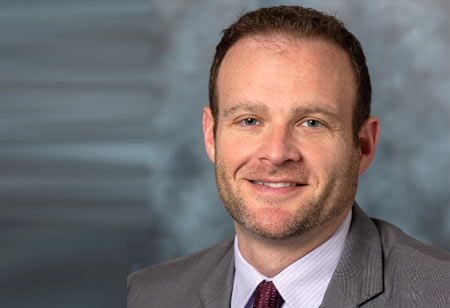Thank you for Subscribing to Healthcare Business Review Weekly Brief

Healthcare Goal: Superior Patient Experience
Healthcare Business Review
Alan Dubovsky is the Vice President and Chief Patient Experience Officer of California-based Cedars-Sinai, a leader in the clinical care for and research of heart disease, cancer, and brain disorders. Tapping two decades of experience in healthcare, Dubovsky is helping to set new standards for quality and innovation in patient care, research, teaching and community service. Under his leadership,Cedars-Sinai began rethinking patient experience, such asoffering video visits, in-house entertainment, and patient communication systems, therebycreatingnovel digital experiences.
Prior to his position at Cedars-Sinai, Dubovsky served as a Director of Operations at Emory Healthcare, where he spearheaded changes across treatment and services that areunavailable at local community hospitals.
In an interview with Healthcare Tech Outlook magazine, Dubovsky sheds light on the significance of improvingpatient experience in the healthcare space.
What, according to you, are the pain points that patients and healthcare organizations face with respect to patient engagement and experience?
During the COVID-19 pandemic surges, most organizations have delivered an impressive patient experience. There has been a notable uptick in patients' gratitude for the work being done. Prior to the pandemic, however, the wheels spun differently.
Healthcare, in general, had an archaic infrastructure in which patients drove to a hospital or clinic and waited, sometimes too long,for care. Patients sometimes were misunderstood and unaware of the ins and outs of hospitals—unclear about what was happening around them. Many patients grew frustrated with the wait time and delayed procedures, which consumed large parts of their days. They longed for improvement that digitalization provides.To that end, Cedars-Sinai has focused on addressing, through a variety of sources, the most urgent needs of our patients.
What would you say about the emerging healthcare trends that improvepatient experience?
While the world continues to see the emergence of new technologies, the healthcare industry is leveraging them to improve the patient experience. At Cedars-Sinai, we have initiated several updates that address patient requests. Video visits are one such specialized service. They have been embraced by many patients, especially during the pandemic.
When it comes to waits and delays, many healthcare professionals brainstorm about improving access. This is where predictive analytics offera unique recipe for improvement. We figure out what is likely to improve staffing and other beneficial changes, especially transparency for patients. As such, hospitals and clinics then can publish wait times and other relevant information online so that patients are better informed.
What are some projects or initiatives that you have leveraged to bring valuable changes in healthcare?
We are currently deploying technologies such as iPads and Android tablets to each of our patient rooms, giving patients the opportunity to connect digitally, either for entertainment purposes or for access to their medical records. Our hospital now provides digital access for about 900 beds, which has turned out to be notably beneficial for our patients.
We are leaders in leveraging cutting-edge technologies, which give our healthcare teams access to the forefront of medical advances and breakthroughs.
How do you envision the future of patient experience?
I believe that many hospitals will invest heavily in technology to improve the patient experience—via digital means. We foresee offering amenities that employ a 24/7, virtual concierge-type model. This will give patients the ability to talk to their care provider or nurse from wherever they are. In the coming year, I hope to further implement these innovations, which enhance the patient experience.
What is the single piece of advice you would like to impart to a fellow or aspiring professional in your field?
The one thing I have always focused on at Cedars-Sinai is carefully zeroing in on patient needs before I plan a new program. We gather good survey data from advisors, patients and families. Patients participate in part of our steering committee discussions; Iimprovise off their ideas as part of our process. I recommend that every healthcare professional do the same and validate the patients’ involvementin the work being done.









